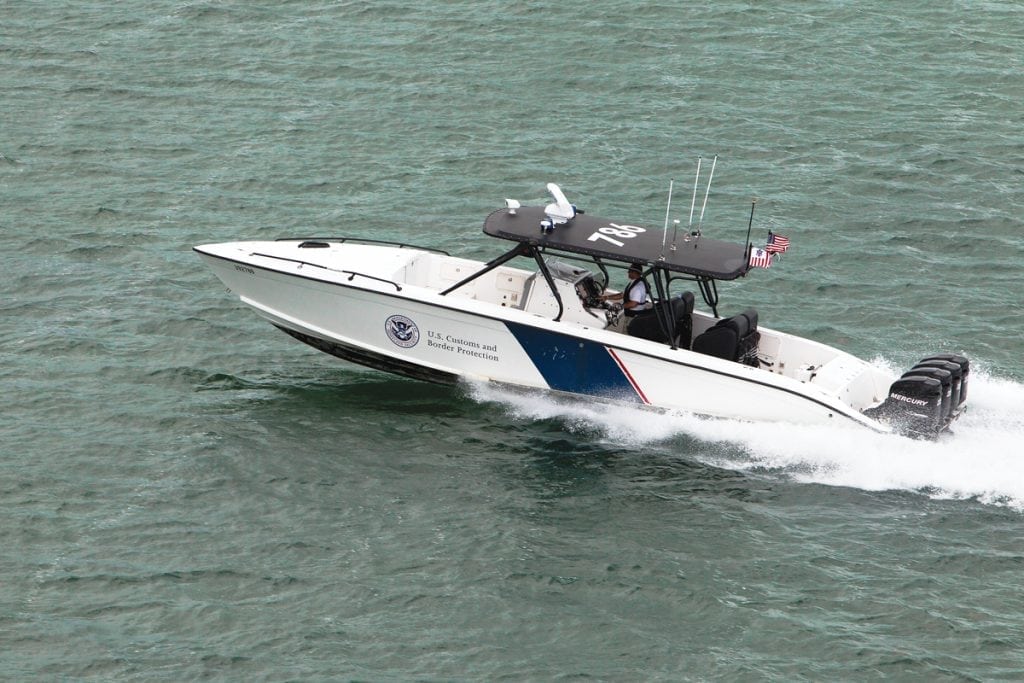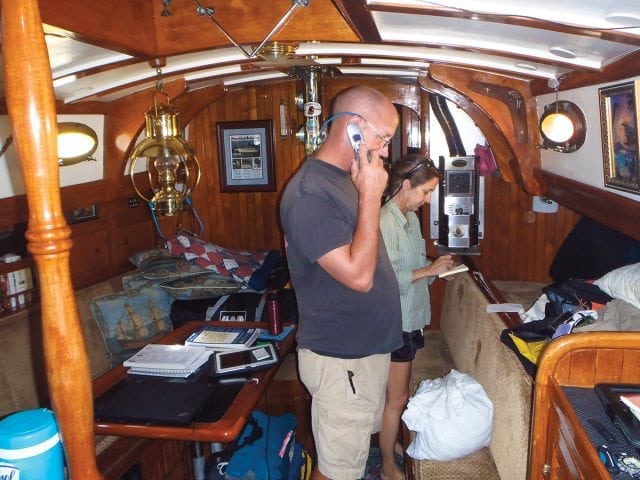How to Clear Customs in the U.S.

Your trip to The Bahamas was great! You “Got grabbed by the Guana Grabber” and ate enough conch fritters to give Aunt Edna a week’s worth of gout. Now it’s time to point the bow west and head back to the good ol’ U.S. of A. But will your entry into home waters be the stuff of nightmares or simply a pleasant footnote? Here’s how to clear customs and make checking back into the U.S. the easiest part of the whole trip.
The Rules
“For small pleasure vessels that visit any foreign port or place or have contact with any hovering vessel at sea, the trip is not complete until the master and all passengers report to CBP as required by federal law,” states Customs and Border Patrol (CBP) regulations.
Federal law requires that all U.S. citizens, permanent residents, and aliens seeking entry to the United States must report their arrival. If your boat has anchored or tied up within U.S. waters, you have entered the United States. CBP affirms that no one shall board or leave the boat without first completing customs processing. The exemption? If granted permission by the CBP officer in charge.
If it is necessary for someone to leave the boat to report arrival to CBP, he or she must return to the boat after reporting and remain on board unless instructed otherwise. No one who arrived on that boat may leave until the CBP officer grants permission to go ashore. Report the arrival into the United States to the nearest CBP office. If you fail to report your entry, you may face significant civil penalties, including fines, vessel seizures, and imprisonment.
The LBO and the SVRS
In the past, the only option was for the vessel’s captain to go ashore with all the required information for vessel and crew, make the call to CBP and ensure everyone stayed on board until release was granted by a CBP officer. A much more convenient way to check in is by signing up for the Local Boater Option (LBO), a program available in South Florida to boat operators who are U.S. citizens or lawful permanent residents of the United States.
Enrollment in the program allows expedited arrival and customs and immigration clearance for recreational, low-risk boats at the time of arrival. Unless otherwise directed by a CBP officer, participation in the LBO program satisfies the captain’s legal requirement to report to a designated port of entry for inspection; however, you’re still required to phone in your arrival to CBP.
In 2010, CBP introduced the Small Vessel Reporting System (SVRS), a free, automated, web-based reporting system created for LBO participants to expeditiously report their intended arrivals from foreign countries. Applying for participation in SVRS takes about 15 minutes in three steps:
- Complete an online application.
- Schedule your appointment for an interview by phone or online.
- Show up for the interview and present your documents to the CBP Officer.
The SVRS system allows new applicants to enroll in the LBO program and make an appointment for a face-to-face interview with a CBP officer at an authorized reporting location of their choice. Both the captain and passengers can participate in the program, but the captain must provide all vessel information. The applicant’s documentation will be reviewed and verified to establish immigration status and identity.

Once an LBO…
Once participation in the LBO program is granted by CBP, you’ll receive an email with your Boater Registration number and a password for SVRS. Current LBO participants will not be required to complete an interview; however, they will need to apply online for a password to access the float plan functions of SVRS.
After receiving their SVRS password, LBO participants can easily record and update their intended international travel on a private vessel by filing a float plan. Float plans consist of biographical information of all persons intending to travel, vessel registration information and itinerary information. SVRS will issue a float plan number when the float plan is entered and activated. The float plan will be vetted by CBP prior to the vessel returns to U.S. waters.
What you’ll need to clear customs:
Upon returning to the United States, LBO participants who filed the float plan have two options for formal notification of arrival: Call the CBP Small Vessel Call Center closest to their point of entry, or use the new Reporting Offsite Arrival-Mobile, aka the ROAM app.
If you call, be ready with the following information:
- Name, date of birth and citizenship of all persons on board (including passport numbers and visa information, if applicable)
- LBO registration number or Float Plan number
- Name of the boat and/or boat registration number and nationality
- CBP user fee decal number (if the vessel is 30 feet or longer)
- If a qualified foreign vessel, the cruising license number
- Return contact number
- Persons traveling with you who are not LBO members must report to the nearest CBP office for immigration processing within 24 hours after arrival.
The Reporting Offsite Arrival-Mobile (ROAM) app offers an alternative to the 1-800 number currently in use. Available through iTunes and Google Play, CBP believes pleasure boaters will save time using the app with shorter wait times (compared to calling in) and the ability for remote inspections by officers using the video chat function. For complete details visit the CPB website.
Eligibility
The SVRS is available for use to all U.S. citizens, nationals and lawful permanent residents. It’s also available for Canadian citizens and permanent residents of Canada who are nationals of a Visa Waiver Program country. Trusted Traveler Program members and current holders of an I-68 (Canadian Border Boat Landing Permit) must apply for enrollment in SVRS online in order to participate, but they do not need to schedule an interview with a CBP officer to complete their application.
The Advantages
One of the benefits? If all the requirements are met, you can clear customs with CBP on the phone. U.S. vessels larger than 30 feet must also display a Customs User Fee decal (available online in advance of your trip using the Decal and Transponder Online Procurement System). When checking back into the States, CBP will likely request the decal number.